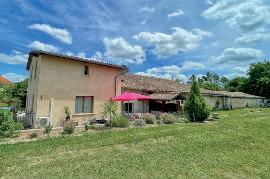of the Night Native Owls

















of the Night Native Owls
















CONTACT US:
Tel: 05 17 36 15 32 email: editors.etcetera@gmail.com website: www.etceteraonline.org
17 rue des Chaumettes 86290 St Léomer
etcetera magazine @etceterafrance
Welcome to the June edition of etcetera magazine.
This month we celebrate the arrival of summer, as the days grow longer and the sun shines brighter, June offers a plethora of opportunities to explore and indulge in the wonders of the region around us. The 21st of June sees not only the summer solstice, but also la fête de la musique, so make sure to check out events in your area and join in the fun!
Wishing you all a wonderful month ahead.
15 SAMU (Medical)
17 Gendarmes (Police)
18 Pompiers (Fire and also trained in medical emergency)
114 Text-message emergency number for deaf/hard of hearing
119 Child abuse
115 Homeless
113 Drugs and alcohol
112 European emergency not always English
1616 Emergency- Sea & Lake
3131 Last incoming call, key ‘5’ to connect Orange
English speaking helpline
0033 (0)9 69 36 39 00
Website in English: www.orange.com/en/home
Commercial adverts: Please see our Media Pack at www.etceteraonline.org
What’s On/Listings: 12€ per 50 words for a guaranteed spot or free (space permitting)
Classified listing: 6€ per 25 words plus 3€ per photo
Property listing: 10€ per 50 words plus 6€ per photo




Code APE 5814Z Edition de Revues et Periodique
Siret 80903463000016. La Présidente G. Feasey
Registered. Le Bourg, 87360 Verneuil Moustiers.
Impression: Rotimpres. Pol. Ind Casa Nova. Carrer
Pla de l’Estany s/n. 17181 Aiguaviva (Girona) Espagne. etcetera est gratuit.
While we always do our best to ensure the content in this magazine is given in good faith and businesses are reputable, we accept no liability for any errors or omissions and do not endorse any companies, products or services. Articles written are the personal opinions of the original authors and do not necessarily reflect the views of etcetera magazine.
Technical assistance for landlines (French): 3900 (+33 9 69 39 39 00 from abroad)

SFR 1023 or 00336 1000 1023 (Not English)
EDF
8am to 8pm, Monday to Saturday.
+33 (0)9 69 36 63 83 EDF Helpline in English
0033
562164908 (From UK)
05 62 16 49 32 Fax
E-mail: simpleenergywithedf@edf.fr
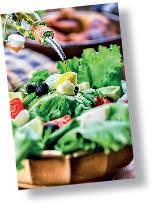

CPAM - 09 74 75 36 46
Veolia Water Emergency No: 24h/24 et 7j/7
05 61 80 09 02 (press 1 for urgent problems or 2 for a technician)
S.E.P Du Confolens (Water)
05 87 23 10 08 Emergency 24/7
Aéroport Int’l Limoges 05 55 43 30 30
SNCF (train times, buying tickets etc) 36 35
Alcoholics Anonymous
For contact details of meetings in your area including those conducted in English, visit www.aafrance.net

HOSPITALS
05 55 05 55 55 Limoges (CHU)
05 55 43 50 00 St Junien
05 55 47 20 20 Bellac
05 49 44 44 44 Poitiers
05 45 24 40 40 Angoulême

05 49 32 79 79 Niort
05 45 84 40 00 Confolens
Women for Women in France offering support to foreign-born (non-French speaking) women dealing with domestic abuse www.womenforwomenfrance.org

Counselling In France Counsellors, psychotherapists, NLP, CBT etc offering therapy in English to expatriates all over France on www.counsellinginfrance.com
SSAFA France 05 53 24 92 38 email france@ssafa.org.uk
French Health Insurance Advice line CPAM English speaking Advice line: 09 74 75 36 46 (from France)
0033 974 75 36 46 (from other countries). The line is open from Monday to Friday, from 8:30 a.m. to 5:30 p.m.
NHS website : www.nhs.uk/using-thenhs/healthcare-abroad
www.ameli.fr
No Panic France Helpline:
No Panic UK helpline:
0044 1 952 590 545 11h - 23h (French time) 7/7 www.nopanic.org.uk /nopanicfrance@orange.fr
English-speaking Crisis Line
SOS- HELP 01 46 21 46 46 3pm-11pm 7/7
British Consulate in Paris 01 44 51 31 00
British Consulate in Bordeaux 05 57 22 21 10 www.ukinfrance.fco.gov.uk/en/
Credit Agricole English Speaking Helpline Charente (residents only) 05 45 20 49 60









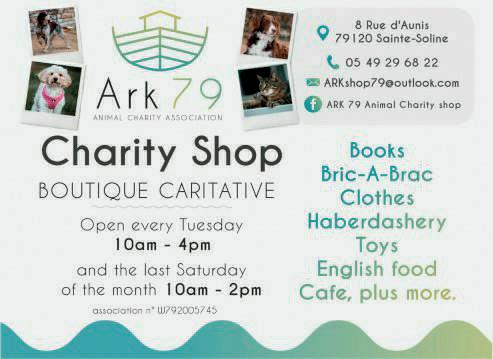


















Sarah is the author of craftinvaders.co.uk where she blogs about her original craft tutorials, recipes, foraging, and developing wellbeing through being creative, spending time outdoors and connecting with nature
 BySarahWhiting
BySarahWhiting

Pine resin salve is known for its antiseptic and antimicrobial properties, which can help prevent infection and promote healing in minor cuts, scrapes, and burns. It forms a protective barrier over the affected area, shielding it from external contaminants while allowing the skin to breathe.
The salve's natural anti-inflammatory properties can provide relief from pain, swelling, and inflammation associated with insect bites, skin rashes, and minor skin irritations. It may soothe itching and redness, providing a cooling effect on the skin.
Pine resin salve can be used topically as a chest rub to help alleviate congestion and support respiratory health. When applied to the chest, the aromatic vapors released by the salve can help open up the airways and provide a sense of relief from coughs, colds, and sinus congestion.


OLD CLOTHES! Collecting resin is a sticky process!
A glass bowl and saucepan
Strainer, mesh or muslin
Grater Containers
The warming properties of pine resin salve make it useful for soothing sore muscles and joints. It can be massaged onto areas of discomfort to promote relaxation, increase circulation, and relieve minor aches and pains. It has adhesive properties, which historically made it valuable for sealing wounds, closing small cuts, or even acting as a natural glue for various purposes.
Please note that while pine resin salve has been used traditionally for various purposes, it's always recommended to consult with a healthcare professional before using any new product, especially if you have specific health concerns or allergies.
As with all foraging, it is essential to ensure that you have correctly identified the tree before collecting as some trees have toxic properties. As boiling water is needed, always ensure children are supervised.


1. Once you have sourced your resin, you need to melt it down. It is extremely flammable so it should be melted into the oil gently using a double boiler. You use a glass bowl and saucepan containing barely simmering water. Please note the glass bowl should sit above the water and be heated by the resulting steam not touch the water itself.
2. Simmer very gently until the resin melts. This usually takes a good hour to dissolve.
3. Strain through a fine mesh strainer or piece of muslin and return to the double boiler.
4. For every cup of resin/oil mixture, add 1/4 cup of grated beeswax. Gently heat while stirring until the wax has melted, then pour the melted balm into small containers and allow to cool.


For as little as 39€ ttc
www.etceteraonline.org




1 Rue du 19 Mars 1962 87150 Oradour sur Vayres
Picture framers to La Galerie de Gabriel




Memorabilia
John Selley EI - 09 77 00 66 38


Email: encadrement.oradour@gmail.com

TUNING & REPAIRS
Never throw away your treasured piano, until we have seen it! We have repaired and reconditioned pianos in England and in France for over 40 years, from mini pianos to concert grands. Many years of experience.

Telephone: 05 45 21 16 13
Email: mr-piano-man@hotmail.com
Browse our selection of unique gifts, enjoy a meal from our new menuindoor & terrace seating available. BESPOKE by Denise can also be contacted directly on 06 75 89 95 55
To view our collection, please visit our FB page: www.facebook.com/bespokedenise.eyre or website www.bespokebydenise.com



Histoire :
Allô ! Répondre au téléphone en français, comprendre ce qui est dit au téléphone et comprendre le jargon typique du téléphone, ne sont pas aussi évident que cela. Aussi, quand vous téléphonez à une administration, il faut souvent faire des choix en appuyant sur des touches du téléphone et il faut aussi souvent attendre longtemps.
Hello! Answering the phone in French, understanding what is being said on the phone, and understanding all the typical phone jargon, are not easy. Also, when you call admin, you often need to make choices by pressing keys on the phone and there is often a long wait.
La plupart des gens n’aiment pas parler au téléphone. Mais si vous connaissiez mieux certaines expressions et façons de dire les choses, cela sera beaucoup moins effrayant.
Most people do not like speaking on the phone. But if you get to know some expressions and ways to say things it will be much less scary.

Alors, pour vous aider, je vous donne ici des phrases typiques que vous pouvez entendre et que vous pourrez dire.
So, to help you, here are some typical phrases that you will hear and can say.
au téléphone
on the phone
le numéro de téléphone
the phone number
le téléphone fixe
the land line
le téléphone portable = le téléphone mobile
the mobile phone
le standard the switchboard
l’indicatif (m.)
the dialing code
Je suis au …(+ numéro de téléphone
I am on …..(+ phone number)

la ligne (here) the telephone line
la tonalité the dialing tone
l’annuaire
the directory
marquer / composer (verb) to dial
le coup de téléphone the phone call
les coordonnées (numéro de téléphone, adresse)
contact details (telephone number, address)
appeler quelqu’un (verb) to call someone
téléphoner à quelqu’un (verb) to phone someone
rappeler quelqu’un (verb) to call someone back
joindre (verb) = contacter quelqu’un (verb) to reach / to contact someone

Allô !
Hello (on the phone)
Ne quittez pas, s’il vous plaît ! Please hold the line / Hold on please.
Puis-je vous aider ?
May I help you?
Qui est à l’appareil, s’il vous plaît ?
Who’s calling please?
C’est de la part de qui ?
Who’s calling ?
Qui dois-je annoncer ?
Who shall I say is calling?
C’est Sophie à l’appareil. It’s Sophie speaking.
Je ne vous entends pas. I can’t hear you.
Pouvez-vous parler moins vite ?
Could you speak more slowly?
Pouvez-vous épeler votre nom ? Could you spell your name?
Est-ce que je peux prendre un message ?
Can I take a message?
Puis-je avoir votre numero de téléphone ?
May I have your phone number?
Quel est le numéro de téléphone de…?

What’s the phone number of….?


Puis-je avoir vos coordonnées ?
May I have your contact details?
C’est occupé.
The line is busy
Je n’arrive pas à le joindre. I can’t reach him.
Il n’est pas disponible pour le moment.
He’s not available at the moment.
Désolé, il est absent.
I’m sorry, he’s out.
Désolé, il est en réunion.
I’m sorry, he is in a meeting.
Désolé, il est en ligne.
I’m sorry, he is on the phone.
Quand peut-il vous rappeler ?
When can he call you back?
Je vous passe M. …….
I’ll put you through to Mr…/ I’ll connect you to Mr…
Je vous rappelle.
I’ll call you back.
Pouvez-vous rappeler plus tard ?
Can you call back later?
Peut-il vous rappeler ?
Can he call you back?
Faire erreur (verb) / se tromper (verb)
To make a mistake
Vous avez fait erreur. You made a mistake.
Faire un mauvais numéro (verb)
To dial a wrong number
Je me suis trompé de numéro. I have got the wrong number
On reste en contact. We’ll keep in touch
Merci de votre appel. Thank you for calling
l’opérateur (m) / l’opératrice (f) the operator une touche de téléphone a phone key

Taper dièse (#) pour accéder au service.
Press the hash key (#) to access the service.
Learn French with Continental Horizons! Contact us by email : continentalhorizons@free.fr Bon courage ! Et à bientôt !
Élargissez vos horizons avec CONTINENTAL HORIZONS ! Broaden your horizons with CONTINENTAL HORIZONS!
Isabelle works for CONTINENTAL HORIZONS Language Centre in L’Isle Jourdain 86. She is a specialist Teacher of French as a Foreign Language with more than 25 years’ experience.
Do not hesitate to contact her on 06 20 10 34 49 or 05 49 84 17 73
Taper 1 pour…
Dial 1 for….
Taper 2 pour……



Dial
« Bonjour, vous êtes bien au 05 49 84 17 73. Nous sommes absents pour le moment, mais laissez-nous un message et vos coordonnées après le signal sonore. Nous vous rappellerons dès que possible. Merci, à bientôt. »


“ Hello, you’ve reached 05 49 84 17 73. We are away at the moment, but leave us a message and your details after the beep. We’ll call you back as


soon as possible. Thank you. Speak to you soon.”

« Bonjour, je voudrais laisser un message à Isabelle. Je suis David Brown. Je voudrais avoir des informations sur les cours de français. Pouvez-vous me rappeler sur mon mobile, au 06 10 11 12 13 ? Merci. Au revoir. »


"Hello, I would like to leave a message for Isabelle. I am David Brown. I would like some information on French lessons. Could you call me back on my mobile on 06 10 11 12 13? Thank you. Goodbye.”
Pour joindre quelqu’un, on peut aussi envoyer un texto (= un SMS)


To contact someone, one can also send a text message (= an SMS).

Much beloved of historians is the game of “What If?”, exploring how our past could so easily have been very different. How would Britain look today if William of Normandy had been repelled in 1066, for instance? Or what consequences would have followed an Allied defeat on D-Day? What if the Spice Girls had actually been able to sing? (Ok, not that one but you get the idea). History is a chaotic tumble of cause-and-effect and we don’t need forensic analytical skills to recognise that nothing was, or is, ever certain. We simply live with the one outcome which actually came to pass.
These ‘hypothetical’ histories are important because they show us how a single event can change everything which follows. One “What If?” in particular is close to my own heart and I would like to share it here. It concerns an event which occurred exactly fifty-five years ago this month with the assassination in Los Angeles of Senator Robert Francis Kennedy. Widely known as ‘RFK’ he’s always been something of a hero of mine. Shockingly, his murder in June 1968 came just nine weeks after that of Dr Martin Luther King Jr. “There are decades where nothing happens; and there are weeks where decades happen.”, wrote Vladimir

Lenin, who knew a thing or two about unforeseen events.
I was twelve years old then and I’m pretty sure my overly serious nature became more immersed in the nightly TV news bulletins than was healthy. In my defence, though, I’ll add that I was also fixated with blues music and Liverpool FC. Don’t think I was a one-topic obsessive.
I believe Robert Kennedy was a unique politician. Certainly, he was not without character flaws; he could be unnecessarily blunt in conversation. Also, despite fathering 11 children with his wife, he still shared the family weakness for the, ahem, shapely ankle. However, greatness surely lies not in the absence of failings but in the overcoming of them. My admiration stems from the way RFK evolved over the astonishing arc of his life. I’ll keep it brief: Born into wealth and privilege, he became first an attack dog for the notorious antiCommunist hearings and later US Attorney General, determined to smash organised crime. He was a tough cookie, as they say. But overwhelmed by the loss of his brother in Dallas in 1963, he stepped back and the next few years brought about a remarkable personal transformation.
White lives in south Indre with his wife, too many moles and not enough guitars
He travelled widely through Latin America and South Africa, opening his eyes to, and developing immense empathy for, the poor and dispossessed. By 1968 Robert Kennedy had become an anti-war liberal, advocating gun control and defending the rights of minorities. Outraged by the poverty he had seen across his own country, he announced his run for the presidency, determined to defeat racism in America.
“Half a century on, why does it matter?” you cry. Well, had he lived, there was a reasonable chance Robert Kennedy would have been elected US President in November 1968. Instead, America got Richard Nixon with his cauldron of personal grievances, the Watergate conspiracy, and a massive escalation of the war in Vietnam. Nixon’s vengeful character viewed those with different ideas not as opponents but as “the enemy”. US politics today bears the legacy of this tribalism, the merry band of zealots with their firearms fetish, viciously disparaging those of whom they disapprove. That’s why it matters. In 1968 one disgruntled young man with a cheap handgun in a Los Angeles hotel catapulted America down this road.
Robert Kennedy’s doctrine was to mobilise people’s hopes not play on their fears; advocating not what to avoid but what to aspire to. Of course an RFK presidency would have seen the scandals and missteps which batter every government; the Kennedy name itself could inspire a visceral dislike in some quarters. But intent is everything, the belief in the government’s responsibility to improve the lives of as many people as possible. Our bookshelves include three biographies of Robert Kennedy plus “Thirteen Days”, his own blood-freezing account of the 1962 Cuban Missile Crisis. Another book, compiled by his son Maxwell Taylor Kennedy, is a collection of his father’s writings. As well as quotations and the thoughts of those he admired (FrenchAlgerian writer Albert Camus was a favourite), it contains drafts and notes made by RFK for his own speeches.
The book takes its title from this pledge: “Let us dedicate ourselves to what the Greeks wrote so many years ago; to tame the savageness of man and make gentle the life of this world.”
A road not taken, a future denied. Not so much a “What if?” as an “If only.”

These ‘hypothetical’ histories are important because they show us how a single event can change everything which follows
WITH SUMMER UPON US WE CAN DITCH THE OVEN COOKING AND CONCENTRATE ON DELICIOUS AND HEALTHY SALADS FOR THE WARM DAYS HEAD!
I was fortunate to be able to “retire early” from corporate London life and with some spare time on my hands before Lee was ready for the big change, and my love of cooking, I decided to start a small food business. So, for 5 years before our chateau life began, I spent some happy times catering for parties, weddings, christenings and the like in our small corner of the Southeast of England.
Part of my business was running a market stall at local Farmers’ markets, selling homemade deli products – hand-carved ham, patés, quiches, ready-prepared meals and salads. My salad bar became quite famous in our little part of the world, and after a while, I became known locally as the “Salad Lady”.
Even today, I like nothing better than the opportunity to whip up a few different salads to accompany a summer barbecue or buffet, so since it’s that time of year, I thought I’d share some of my recipes with you.

Ingredients (Serves 6-8 as a side dish)
1 tin of cannellini beans, drained and rinsed
1 tin of red kidney beans, drained and rinsed
1 tin of chickpeas, drained and rinsed
2 celery stalks, finely chopped
½ red onion, finely chopped
Handful of finely chopped parsley
1 tbsp fresh rosemary, finely chopped
80ml cider vinegar
60g sugar or honey
60ml olive oil
1 ½tsp salt
¼ tsp black pepper


Method
1. In a large bowl, mix together all the beans with the celery, onion, parsley and rosemary.
2. In a separate small bowl, whisk together the vinegar, sugar, olive oil, salt and pepper. Add the dressing to the beans and toss to coat.
3. Chill the salad in the fridge for a few hours to allow the delicious flavours of the dressing to soak into the beans.
Belinda, the ‘Accidental Chatelaine’ loves to cook at any opportunity and is delighted to be able to share that love with you

 ByBelindaPrince
ByBelindaPrince
www.chateaumareuil.com
Ingredients (Serves 6-8 as a side dish)
250g couscous

250ml boiling water
1 ½ tsp salt
1 small red onion, finely diced
1 red pepper, finely diced
1 small cucumber, seeded and finely diced
Handful cherry tomatoes, halved
Handful fresh mint, chopped
Handful fresh parsley, chopped
1 large lemon, rinded and juiced
4 tbsp olive oil
Method
1. Pour the boiling water on to the couscous, add ½ tsp salt and stir to mix.
2. Cover with a lid or some cling film and leave for 5 minutes or so.
3. When the water’s fully absorbed, fluff up with a fork and add the olive oil, lemon juice, the other tsp of salt and all the other ingredients.
4. Check the seasoning and add freshly ground black pepper, if liked. Serve cold.
Ingredients (Serves 4 as a side dish)
2 pears

100g rocket

100g blue cheese
100g walnuts, lightly toasted
50g fresh blueberries
Dressing
2 tsp honey
60ml olive oil


1 tbsp white wine vinegar

Method
1. Whisk together the honey, extravirgin olive oil and white wine vinegar, or shake together in a screw top jar.
2. Remove the cores from the pears and slice thinly, leaving skin on if you prefer. Place the pears in a bowl and pour over the dressing.
3. Combine the rocket leaves, crumbled blue cheese and walnuts on a serving platter.

4. Scatter the salad with the ripe pears and blueberries, drizzle over any extra dressing and serve.


Ingredients (Serves 6-8 as a side dish)
½ medium white cabbage, finely sliced

½ medium red cabbage, finely sliced
4 medium carrots, julienned
2 tsp salt
2 tsp sugar
2 tbsp white wine vinegar (or cider vinegar)
150ml good quality mayonnaise
2 tbsp creamed horseradish or Dijon mustard
4 spring onions, finely chopped Method
1. Put the sliced cabbage together with the carrots into a large colander, add the salt, sugar and vinegar and toss
together well. Leave in the sink or over a large pan to drain for an hour.
2. This is an important step as it softens the vegetables slightly and makes the end product less watery. For the same reason, I always slice the cabbage and carrots by hand rather than in the food processor.
3. Either make your own mayonnaise (to be honest, I’ve never made it!), or use from a jar and add the horseradish or mustard and mix well together in a large bowl, add salt & pepper to taste. Press down on to the drained vegetables to squeeze out any remaining liquid and add to the bowl together with the spring onions. Toss together and serve or keep in a sealed container in the fridge until required.
Ingredients (Serves 6-8 as a side dish)
200g green or French lentils

150g frozen peas
500ml chicken stock
¼ tsp salt

Freshly ground black pepper
150g smoked bacon lardons
2 large shallots, cut in half and thinly sliced
4 cloves garlic, minced
3 large sprigs rosemary, leaves stripped and finely chopped
3 large leaves sage, finely chopped

2 tbsp capers, roughly chopped
Handful parsley, roughly chopped
Dressing
3 tbsp olive oil
1 tbsp Dijon mustard


½ tbsp Balsamic vinegar

Method
1. Wash and rinse the lentils. Put in a small saucepan and cover with the chicken stock. Bring to the boil, then lower to a simmer and cook until just tender, about 20 to 25 minutes. Add extra water while cooking if the liquid gets low. Add the frozen peas fr the last minute or so of cooking. Drain the lentils and peas and return them to the pot. Stir in the salt.
2. Meanwhile, whilst the lentils are cooking, fry the lardons over a medium heat until crispy. Drain most of the fat out of the pan, then add the shallots, garlic, rosemary, and sage,
and cook for 2 to 3 minutes or until the garlic is fragrant and the shallots are tender but not soft. Remove from the heat.
3. Whisk the olive oil, mustard, and balsamic vinegar together until thick. Toss with the warm, drained lentils and peas, then stir in the bacon and shallot mixture. Stir in the chopped capers and parsley. Taste and season with additional salt, if needed, and a generous quantity of black pepper.
Serve warm. This keeps for 5 days in the refrigerator and is also good eaten cold.

Ingredients (Serves 4-6)

4 chicken breasts
Olive oil

Salt & freshly ground black pepper
125ml good quality mayonnaise*
1 ½ tbsp freshly chopped tarragon
2 celery stalks, diced
50g walnuts or pecans, lightly toasted and chopped
Small bunch of black or green grapes, halved and seeded
Pre-heat the oven to 180◦C/200◦ C fan

Method
1. Place the chicken breasts on a baking tray, drizzle with olive oil and rub in well. Season generously with salt and

pepper. Roast for 20-25 mins until tender and just cooked through. Set aside to cool.
2. When cooled, chop the chicken into bite-size chunks and place in a bowl. Add the mayonnaise, tarragon leaves, celery, grapes and nuts - season to taste. Toss well together.
Use half Greek yoghurt for a lighter, more tangy dressing*
Delicious served on a bed of lettuce or as a luxurious sandwich filling!
Traditionally used for canning and preserving food, mason jars are a great way of storing your salads, especially when you’re out and about. They are an ecofriendly alternative to tupperware, or just use old jars!

Layer 1: First add your dressing into the jar. You can take any type of dressing. (If you add the dressing later, ingredients that you’d much rather stay dry might get soggy.)
Layer 2: Now enter crisp ingredients such as tomatoes, cucumbers, red onion, asparagus, celery, peppers, carrots into the jar. This level protects the other ingredients from getting soggy.
Layer 3: This level is for ingredients that should not necessarily swim in dressing, but it’s also not a drama if they do get wet.
Layer 4: More delicate ingredients such as hard boiled eggs and cheese.
Layer 5: Add something substantial, like rice, pasta, quinoa or couscous, this ‘seals’ the jar
Layer 6: Finally, add foods that don’t like being wet, e.g. nuts and greens such as lettuce, spinach etc.
Now seal!









Adopted by the public sector in January 2020, electronic billing from one business to another will be obligatory from 2024. The Loi de Finances 2020 brought in the progressive generalisation of electronic billing for businesses in the private sector.
This law has a twofold objective. The first is to assist in the move towards a more ecological and paperless society and the second is to make tax and VAT fraud more complicated.
Businesses are having to prepare for this change. It can not be left to the last minute to put in place the software and the methodology for managing electronic billing.
You will already start to see the effect of this law in your daily life, when at the supermarket till you are asked if you want a paper receipt.
Electronic billing concerns all operations between businesses established in France and who are subject to TVA. So that includes the delivery of goods and services in France to someone from a business that is TVA registered to a business or person who is not; including deposit payments.
This law is coming in from the 1st July 2024, so just around the corner. It should have been adopted this July, but due to Covid and the world economic crisis, it was delayed a year.
It will become obligatory in different stages:
1st July 2024: obligation to send and receive electronic billing for business categorised les grandes entreprises
1st January 2025: obligation to send and receive electronic billing for business categorised les entreprises intermédiaires
1st January 2026: obligation to send and receive electronic billing for business categorised petites et moyennes entreprises and microenterprises
So this means that even if you are a microenterprise and you bill a business that is a grande or intermédiaire sized business you will have to adopt the electronic billing earlier than your category requires.
You will also receive bills via an electronic billing system.
You will need to invest in software. There is software that is designed just for billing. There is also accounting software that includes billing as part of their accounting package.
The software is designed for you to be able to produce correctly formatted invoices that follow the legal requirements.

However, its principal advantage from the tax authorities' point of view is that you can not create an invoice and then delete it without there being a record of its existence. This means that businesses can not create an invoice and then delete it because they received a cash payment.
There are advantages to this reform.
1. Electronic billing and software allow you to manage your paperwork better. It can be a great time saver for the business. Gone are the days when you have lost a receipt or you have to go back to the supplier to request copies. This means that there is accessible traceability.
2. Very often the billing software is integrated into the accounting software that you or your accountant uses. This means that documents can be shared or transmitted to your accountant or bookkeeper daily, allowing them to work on documents in real-time.
3. The electronic billing software can manage your reconciliation between client billing and payments. This means that if the client is late paying the client will receive an automated reminder email. This, therefore, allows for more efficient management of your debt collection and then also your cash flow.
So, it is now time to react! You will need to look at the options available to you and discuss with your accountant how you will manage this change.
It occurred to me that I have now been writing articles for around 10 years now and thought it would be about time I introduce our agencies! And what we can do for you.
“BH-Assurances” is our name and we are an agent of Allianz but also a broker which enables us to sell every type of insurance. We have 16 staff, 7 of which speak English, 2 of which are actually British.

We now have 4 offices based in the Charente but we deal with customers all over France.

I am French but have lived in the UK for 8 years (I did my university degree there) and I am married to an Englishman who forced me to watch cricket!
If you are one of our customers, I do your tax form online or on paper for free. But hopefully, you will want to become our customer for reason such as good services and friendly advice more than me doing your tax form!
We can provide advice on any of these subjects:
French inheritance law Moving to France permanently French income tax Funeral cover
Our bilingual staff are based in the Ruffec and Chasseneuil-sur-Bonnieure offices but Isabelle Want is available by appointments at any of those offices or even at your house (easier for quotes on insurances).
Open: Monday: 2pm to 5.30pmExcept for Roumazieres office which is closed on a Monday



Investments, Savings
Vehicle, house, health top-up and professional insurances.
We have an internet web site: www.bh-assurances.fr/en on which you can find all the previous articles written by me relaying information on any of the subjects above.

We also do a Monthly newsletter (free) which is sent by email and full of useful information not only regarding insurances, French tax, making claims but also more light-hearted subjects related to What happened in France this Month, living in France, agency news, some vocabulary, French recipes, contacts, etc.
To receive it, simply ask me by email and I will add you onto our mailing list. Or you can register directly our web site.
We already have 2200 people receiving it and it would be a shame to miss out, especially when it’s free!
Finally, we have a facebook page on which we notify our followers about weather alerts, bank holidays or news regarding our agencies. The facebook page is “Allianz Jacques Boulesteix and Romain Lesterpt”. So feel free to contact me for quotes or advices any time you like!

Tuesday to Friday: 9am - 12am / 2pm - 6pm Saturday: 9am to 12pm
“ “
So from all of us at BH Assurances, we look forward to meeting you and helping you with all your insurance needs! w
39 51 47














According to a study, only a quarter of people retiring feel confident that they have saved enough. Are you part of the minority? Would you like to set plans in place so you’re not?
It’s a general fact that most are not saving enough for retirement, and inflation, rising cost of living, and global economic instability, are shrinking retirement savings even more.
To avoid becoming a statistic, it will really help to set up a review with your financial advisor, so you know exactly where you are headed with your retirement savings. It is important that you know the kind of lifestyle you want and the expenses that your retirement will incur monthly. Not just normal monthly expenses, but the unforeseen expenses that always creep in.

● Reverse engineer your retirement. Make a retirement budget for yourself based on your current lifestyle less major expenses that you currently have, like a mortgage that is usually paid off by retirement.
● Just because you are retired does not mean you no longer need to save.
● Don’t forget the retirement expenses of renovations, new car purchase etc. Although these are once-off payments, it still comes out of your retirement savings, unless you have separate savings for that.
● Your international tax commitments.
● Yearly expenses like property taxes, vehicle licensing, membership fees, etc.
● What about holidays and trips? Will the money come out of your monthly allowance or from savings?
● Also possible medical procedures or expenses.
● A private pension plan could significantly boost your retirement savings portfolio along with other
diversified investment options. Chat to your advisor today to ensure you are in the 75% of people who will be financially confident in their retirement.
Please note, the above is for education purposes only and does not constitute advice. You should always contact your advisor for a personal consultation.
Helen Booth works as a financial adviser for deVere France S.a.r.l and has lived as well as owned property in the Deux-Sèvres region. Having worked in the financial services in the UK for over 15 years, Helen prides herself in being fully diploma-qualified for the services that she provides. Helen has lived and worked in France for over 8 years and enjoys being part of deVere France S.a.r.l., a division of one of the world’s leading independent financial consultancies, deVere Group.
With over $10 billion of funds under its advice and administration and with more than 80,000 clients around the world, deVere Group truly offers a myriad of unique products and notes that are not available anywhere else in the market. This, as Helen puts it, gives clients the pick of the crop when it comes to investing.
deVere France S.a.r.l. are regulated by ANACOFI-CIF and ORIAS which will only recommend French regulated products.

deVere France can advise you on ways to help safeguard and increase your wealth, as well as helping with HMRC-recognised pension transfers to a Qualified Recognised Overseas Pensions scheme (QROPS) to give you potentially more flexibility in your pension plans.

If you would like to know more about how deVere France can help you, contact


Helen Booth DipPFS , EFA : +33 (0) 77 171 2879 : helen.booth@devere-france.fr
Dénomination sociale: deVere France S.a.r.l, RCS B 528949837, 29 Rue Taitbout, 75009, Paris, France. Gérant: Mr. Jason Trowles. Registre avec ANACOFI-CIF (Association Nationale des Conseils Financiers). Nombre enregistré: E008176, association agréée par l’Autorité des Marchés Financiers. Courtier d’assurances ou de réassurance, Catégorie B, inscrit à l’Organisme pour le Registre des Intermédiaires en Assurance (ORIAS) numéro enregistré 12064640. Garantie Financière et Assurance de Responsabilité Civile Professionnelle conformes aux articles L 541-3 du Code Monétaire et Financier et L 512-6 et 512-7 du Code des Assurances. Registered name: deVere France S.a.r.l, registered company number RCS B 528949837, 29 Rue Taitbout, 75009, Paris, France. Gérant: Mr. Jason Trowles. Registered with ANACOFI-CIF (National Association of Financial Advisers). Registered number: E008176, association approved by the Financial Markets Authority. Insurance and re-insurance brokers, Category B, registered with the Organisation for the Registration of Assurance Intermediaries (ORIAS). Registered number 12064640. Financial and Professional Liability Insurance Guarantee conforms to article L 541-3 of the Monetary and Fiscal Code and L 512-6 and 512-7 of the Assurance Code. 6XKWSX •V1.1/230418
We’ve all been on the receiving end of these (and no doubt ‘unsubscribed’ from some), but newsletters have a key role to play for the small business owner and can offer a number of benefits:
1. Building and maintaining relationships: Newsletters are an excellent way to stay in touch with clients and keep them informed about your business. By providing valuable and relevant content on a regular basis, you can build trust and credibility – your clients can feel like they’re getting to know you personally and will get a better idea of who you are and what you’re about.
2. Increase brand awareness: Newsletters offer the opportunity to increase brand recognition and awareness among your clients through the use of your logo and branding.
3. Promote products and services: Newsletters can be an effective way to promote new products or services (and therefore generate sales). You can include information about special offers, discounts, and other promotions that might interest your clients (maybe include a QR code for a direct link) – it doesn’t need to be a ‘hard sell’, but your
regular newsletter reminds clients who you are and what you do when they need your services.




4. Establish credibility and expertise: By including insightful and informative content in your newsletter, you can build credibility and trust with your clients as they will see that you ‘know your stuff’.
5. Drive traffic: Including links to your website (and other social media platforms) in your newsletter can drive traffic to your site and help improve your search engine rankings.
6. You’re in control: Your newsletter lands straight in your audience’s inbox and as such is not subject to social media platform algorithms and changes.
7. Building a subscriber list: Not only is this invaluable for marketing and communication purposes, but as it doesn’t rely on social media platforms it offers you an alternative way of communicating with customers.
Key things to consider when preparing your newsletter:
Regularity – whether it’s monthly, bimonthly or quarterly, set a schedule and stick to it
Keep it friendly and accessible – try to avoid jargon and keep it ‘chatty’
Tell a story – let your readers understand you and your business better Share links for other businesses or services you’ve come across that might be of interest to your readers
Keep it brief – it doesn’t need to be War & Peace, just enough to hold their interest without them getting bored and hitting ‘unsubscribe’! Don’t forget to add a sign-up form to your website and don’t stress over your number of subscribers - just remember each one is a real person and potential customer. There are a number of email marketing systems out there designed to make the process simple (check out Mailchimp, Mailerlite, Constant Contact, ActiveCampaign) and if you don’t have time to do it yourself, consider outsourcing!

Oestrogen is one of the primary hormones associated with the female reproductive system. It regulates the menstrual cycle but it is also necessary for urinary tract, breast, bone, skin, and blood vessel health.
There are three types of oestrogen created by the body:
Oestrone (E1)
Made in the ovaries and in fat tissue, overproduction is associated with cancer.
Oestradiol (E2)
Made predominantly by women of childbearing age in the ovaries.
Oestriol (E3)
Usually produced in pregnancy and at its highest just prior to birth.
Normal levels of oestrogen in the body contribute to a healthy libido, a healthy and regular menstrual cycle, positive and stable mood, and good bone density levels.
Endocrine Disruptors
There are many sources of chemicals around us that disrupt our balance of hormones. Simple changes to lifestyle can help you to avoid some of them. It’s always worth making the small changes that seem to have only a little impact, the total sum of all the small changes can be significant.
Drink filtered tap water
A number of different chemicals, fertilisers, agricultural chemicals, medicines, and even hormones from excreted birth control medications into the water system have been found in tap water. The only safe way to drink water is to filter it. A Berkey is a great option but if that’s out of your budget then a Brita Water filter is inexpensive and effective. Avoid using chemicals on your skin
Standard shampoos, conditioners, body washes, sprays, roll ons, and other ‘health and beauty’ products contain all kinds of products that affect hormonal balance. They are absorbed through the skin and research has shown that they can be present in urine as the body tries to detoxify. If your budget allows, Living Libations have a great range. Alternatively, choose organic, close to nature products, and use less of them. Coconut oil is antibacterial, anti fungal, moisturising, and antiviral. Using products on your skin that you would eat is a great rule of thumb for how to choose your health and hygiene products.
Choose food packaged in paper, cardboard, and loose (VRAC). Not in plastic and of course, not processed. If you have to buy food in plastic wrapping, unwrap it when you get
home and wash it before you put it into the fridge. Laying paper towels on the bottom of the fridge trays can help to keep the products fresh and moisture out. Cleaning products are a huge problem. Those air fresheners that you spray, plug in, or leave hanging in the car? They all contain chemicals that when you inhale them, disrupt the balance of hormones in your body. Get all chemicals out of the home! Use an essential oil diffuser with proper organic essential oils like Tisserand, DoTerra or Living Libations. Don’t use cheap synthetic essential oils from Amazon or budget shops which contain chemicals and are not made from the actual plants themselves.
Signs and Symptoms
You may have high circulating oestrogen if you suffer from any or all of the following signs and symptoms:
Hair Loss - Low sex drive - Poor sleep quality - Cold hands and feet - Digestive issues - Tender or swollen breastsFatigue - Depression - Non-cancerous breast lumps

This list is not exhaustive but when oestrogen levels are high, especially compared to other female hormones, then a diagnosis of oestrogen dominance can be made. High levels of oestrogen can cause PCOS (Polycystic Ovarian Syndrome), irregular or painful periods, endometriosis, adenomyosis, and can be associated with thyroid dysfunction too. In women there is a relationship between high oestrogen, endometrial, breast and ovarian cancers, and in men, with prostate and breast cancers. Happily there is a lot we can do with our diet and lifestyle to mitigate the effects of high oestrogen. Foods associated with high oestrogen levels are: Processed food, sweets and sugary foods, cooked/pasteurised and non-organic dairy (especially sweetened) and UHT treated, refined grains, processed flour/wheat based foods, biscuits, cakes, pasties, breakfast cereal, and bread.
After menopause, the ovaries stop producing as much oestrogen and fat cells become the main source of oestrogen. That is why obese women can have a much higher risk of developing oestrogen based cancers.
Which dietary choices reduce oestrogen levels?
It will come as no surprise that the Mediterranean diet - packed with delicious fish, fruit, fresh vegetables, and olive oil is
great for this. Fibre rich diets - so lots of vegetables and fruit and whole grains are another winner. Eating a diet high in plants, nuts, and seeds will help you to slow down the absorption of oestrogen in the gut and excrete oestrogen effectively. Lower your body fat to a health level
Healthy looks different on each of us, we are all different shapes and sizes. Don’t get hung up on the scales, or obsess over calories. Instead base this on your clothes and how you feel; you can trust yourself to know if you are a healthy weight or not. Excess body fat will mean increased oestrogen, especially as you age, so remember to keep portion sizes to a handful of each different food. Keep to around 8-10 portions of fruit and veg every day and ditch the processed junkthere is no room for any of it in a healthy diet.
Limit alcohol
This is a biggie. In France it’s so easy to fall foul of the drinking dependency trap. Alcohol may increase oestrogen and definitely affects sleep and all of the body systems negatively. If you cannot control your drinking then reach out for support, your chances of success are higher when you are a part of a group and have support.
Finally, exercise
Exercising helps to reduce oestrogen levels in the body; just 30 minutes 3 times a week has been shown to have positive effects.
Remember, with small changes to your lifestyle, you can make a significant difference!

Healthy looks different on each of us, we are all different shapes and sizes
OESTROGEN LEVELS RISE AND FALL THROUGHOUT YOUR LIFE, OFTEN IN SYNC WITH OTHER HORMONES THAT CONTROL IMPORTANT BODY
‘Our




From just 6€ a week (5€ if you commit to 6 months)

Ran by trained coaches with years of experience.





Weds 9am & Thurs 10.30am - Contact me for full details



What you get: A starter pack - Weekly recipe/inspiration card - Simple calorie counting Cooking demonstrations - EXCLUSIVE Facebook access - Milestone certificates Contact Michelle on: +33 (0) 7 84 83 78 13 +44 (0) 7712235151 or email: michelle@rosequartzceremonies.co.uk

CONSERVING WATER IN THE GARDEN IS NOT ONLY ENVIRONMENTALLY FRIENDLY BUT ALSO A PRACTICAL APPROACH TO SUSTAINABLE GARDENING
It is getting to the time of year when the hot dry weather can be a problem for gardeners and with many regions already on drought alert it seemed timely to look at some solutions that will help to conserve water, keep your plants healthy and productive, and avoid using excessive water which is a precious resource. After the severe water shortages last year we all need to be preparing ourselves (and our gardens) for more of the same.
We have no mains water at Le Jardin Créatif, neither to the nursery nor the house. The house is fed from ground water via the well, but all the water that we use for the nursery is captured over the winter and stored in large containers. Having no mains water supply certainly makes you very careful about water use and we never water our garden or even the potager – except when we first plant something, when we water it in deeply. Occasionally, if something is really struggling in its first season, we may water again, but we use ‘grey’ water - this is
water captured from the shower (we literally just put a bucket under the shower outlet) and all of our washing up water is used for our container plants.
We have no mains water at Le Jardin Créatif, neither to the nursery nor the house
It is surprising how much water you can capture off even a small roof and it is worth calculating how much you need so that you have sufficient storage to last the summer. If you choose the black ‘cuves’ rather than the white ones, they are less likely to develop algae because algae needs light to be able to photosynthesize and reproduce, so the black ones prevent this and it keeps the water fresh all summer. You can always paint, cover, or clad the water butts if you already have the white ones.
Even if you have a well, you should not use this water for the garden especially in the summer months; wells are simply bore holes that tap into the water table, they don’t actually hold water, and if your well is low then it is an indication that the

Caroline has been a lecturer in horticulture for 20 years and now runs a nursery and ‘garden craft’ courses in the Haute-Vienne at Le jardin créatif

entire water table is very low. Accessing this resource is adding to the strain on farmers and on domestic water.
Always Water with Care
Avoid sprinkling water onto the leaves of your plants - they will not absorb the water and in fact if the plants are struggling because they are dry this can encourage diseases on the foliage such as
Le jardin
At our nursery we specialise in perennials that tolerate the drought. We are open every Saturday from 10am - 4pm.
Caroline Wright Le jardin créatifmildew. Instead direct water to the roots, and it is much better to water deeply just occasionally than to sprinkle the surface every day as much of it will be lost to evaporation. It also encourages the roots to come up to the surface where they will dry out very quickly. Deep, occasional watering will encourage the roots to grow deep down where they will be cooler and can access any available groundwater. You can save time by using a ‘seeper’ hose (a porous hose pipe that oozes out water along its length). You can lay them out alongside rows of veg and around border plants. It directs water to the root zone and prevents evaporation. You can even set these on a timer.
If possible water late in the evening just before dusk. As night falls the tiny stomatal pores on the leaves will closethis means that the plants will rehydrate thoroughly without losing any through transpiration. If you water during the day, much of it will be lost by evaporation from the soil surface and through transpiration via the stomatal pores so it is more efficient to do this in the evening allowing your plants to take up as much as possible.
Established plants that have been in the ground for more than a couple of years should not need watering. Only water if

you start to see signs of stress in your plants (slight wilting at the tips).
One of the other most effective things that you can do to conserve water is to mulch. Mulching covers the surface of the soil which helps to prevent evaporation, it keeps the roots cool which also reduces plant stress and if you use an organic mulch it will also add vital nutrients and boost the levels of beneficial biological activity such as earthworms and other friendly bacteria and fungi within the soil without having to dig. Mulch will also help to suppress weeds which will compete with your plants for water and it reduces maintenance too so you can spend more time enjoying the garden!
‘Loose’ mulches consist of a layer of material that you spread over the surface of the soil around the base of your plants (but not touching the crown or trunk). You need a good layer of the mulch in order for it to be effective in suppressing weed growth from below. You also need to make sure that pernicious and deep rooted perennial weeds are completely eradicated
before applying the mulch because they can grow back through the loose layer. Most loose mulches will be ‘organic’ in so much that they are made up of a partially composted material that is usually of a plant-based origin. Materials such as composted green waste, composted bark, well-rotted manure, and properly composted garden waste are all highly beneficial for the plants and environmentally they are excellent too because they are recycled waste products which reduce landfill, boost soil carbon levels, add nutrients, and improve biological activity. They are often free or very inexpensive too. We use grass clippings which we have in abundance. We spread it thinly over our borders, around trees and fruit bushes, and veg plants, and it keeps the soil moist and friable, returns valuable nitrogen to the soil as it breaks down, and improves earthworm activity. You can add layers as they begin to decompose but spread them thinly (no more than 2-3 cm) each time. It may not look attractive at first but soon mellows and it is a brilliant way to manage waste and water ecologically.
As night falls the tiny stomatal pores on the leaves will close this means that the plants will rehydrate thoroughly without losing any through transpiration
Summary of things that you can do in the garden to reduce your water use;

1. Do not water your lawn, it will recover even if it looks brown and totally dead.
2. Do not use a sprinkler. They are not particularly efficient and can use up to 1000 litres of water an hour. Use seeper hoses instead, which can be hidden beneath the soil and deliver water droplets directly to plants' roots.
3. Water your garden during the early morning or late evening when temperatures are cooler. This reduces evaporation rates and allows plants to absorb water before the heat of the day. Avoid watering on windy days to prevent water drift and wastage.
4. Encourage clover to grow in the lawn as it works symbiotically with the grass and helps to keep it green. Do not cut your grass too short or too frequently. (See article from July 2018 for more information about environmentally friendly lawns).
5. Choose plants that will tolerate drought and are suitable for the climate rather than plants that you are familiar with growing in England (we are specialising in drought-proof plants which are available to buy at our nursery).
6. Add plenty of well rotted organic matter to the soil before planting.
7. Avoid raised beds – these increase gravitational pull on the water in the soil and therefore drainage and they dry out more quickly
8. Use grey water from your baths, showers and washing up bowls rather than fresh water from the tap. To ensure the safety of your plants and soil, choose biodegradable and plant-friendly soaps and detergents for household use.
9. Organic mulches, such as wood chips, straw, or shredded bark, are excellent choices for retaining soil moisture. They create a protective layer on top of the soil, reducing evaporation and regulating soil temperature. Organic mulch also breaks down over


The French government has a system of alerts to warn of us of water shortages. Interactive maps are updated regularly showing which areas of the country are affected by low water reserves, with a key denoting the various levels. Full details are available at www. propluvia.developpementdurable.gouv.fr/propluvia.
Simply click on the map to select your area, or you can select from options on the drop-down menus.
Code Summary:
No code - No restrictions
Code 1 - (warning)

▪ Households and businesses are encouraged to reduce water usage, but it is not obligatory.

▪ Local and departmental authorities might share information on reducing water usage and managing drought conditions.
▪ The cleaning of roofs, pavements and facadesBanned except if done by a professional cleaning company
Code 2 - (alert)
▪ Possible bans on watering gardens, green spaces etc within certain hours
▪ Possible car wash ban during certain hours
▪ Limits could be imposed on the amount of water used to fill swimming pools
▪ Agricultural water use is banned between 11am-6pm
▪ Roofs, pavements, facadesCan only be done by a professional cleaning company
time, enriching the soil with organic matter and improving its waterholding capacity.

10. Freshly cut grass clippings can be used as mulch in a drought garden. Spread a thin layer of clippings around plants to help conserve moisture.
11. Fallen leaves make an excellent natural mulch option. Collect, then spread them around your plants. Leaf mulch not only helps conserve moisture but also adds organic matter to the soil as it breaks down.
12. When applying mulch, ensure you don't place it directly against the plant stems or trunks to prevent rot and disease. Leave a small gap around the base of the plant.
13. Regularly check the moisture level of your soil before watering. Use a moisture meter or simply stick your finger into the soil to assess its moisture content. Only water when necessary to avoid overwatering, which can lead to root rot and other plant health issues.
By implementing these water conservation practices in your garden, you can minimize water waste, support the health of your plants, and contribute to sustainable gardening practices.
Code 3 - (heightened alert)




▪ Stricter limits on watering gardens (and all green spaces). There are exceptions for vegetable gardens plus trees and bushes. You are not [permitted to water these between 11am to 6pm.
▪ Tighter restrictions are placed on car washing, with a possible complete ban in some areas
▪ Water usage for agricultural use is limited even further (not permitted between 9am and 8pm)

▪ No filling of public swimming pools
▪ Roofs, pavements, facades - Banned except if done by a professional cleaning company
▪ Code 4 - (crisis)
▪ Water use is only permitted for necessary means, including for drinking, health, cleaning and public safety
▪ Ban on watering gardens (and all green spaces). Again, with exceptions for potagers, trees and bushes within certain hours (banned between 11am - 6pm)
▪ Sports grounds during the day cannot be watered unless for a national or international event
▪ Ban on washing cars
▪ Ban on filling swimming pools
▪ Ban on water usage for most agricultural practices
▪ Roofs, pavements, facades - Can only be done by a professional cleaning company
Hottubsinfrance
www.hottubsinfrance.com

Kick back and relax in your wood-fired hot tub Google business https://hot-tubs-in-france.business.site


▪ New! Wood-fired saunas



▪ Comfortable fibre glass seating up to 10 people
▪ Colourful LED lighting

▪ Soothing air or Hydro massage systems


▪ Insulated cover, drinks holder and step included



















WHAT’S NOT TO LOVE ABOUT JUNE? THE DAYS ARE GETTING LONGER, AND TEMPERATURES ARE RISING WHICH IS THE PERFECT COMBINATION FOR PLANT GROWTH IN OUR GARDENS. AND WITH THE SUMMER SOLSTICE THIS MONTH THERE ARE PLENTY OF LIGHTFILLED HOURS TO BE OUT IN THE GARDEN
By June the danger of frosts are over and it is the time to fill your flower borders, where there is space, with tender summer plants. But do make the move outdoors for these plants a gradual one; even plants you purchase from garden centres or flower shows may well have been cultivated inside, and a sudden change in conditions can cause stress to the plants.
Tender plants
As a rule of thumb tender plants, including bedding plants, tomatoes, sweet corn, cucumbers and courgettes, should be protected until temperatures no longer fall below 10 degrees Celcius. The process of introducing plants to the ‘big world’ outside is known as ‘hardening off’. It is a step-by-step method that encourages plants to develop tougher leaves to prepare them for life in the garden. Begin the hardening off process on a dull, calm overcast day when there will be less stress from direct sun. Put the plants outside during the day and each evening return the plants to somewhere under cover. And take your time; be prepared to devote two to three weeks to the process.
If you don’t have a greenhouse or a cold frame put your plants in a sheltered position and cover with well-secured horticultural fleece. Even with the best of intentions it’s possible to misjudge hardening off, so look at for signs of stress. Cold stressed tomatoes may develop a purple tinge, peppers and aubergines go greyish and leaves of courgettes and other cucurbits may go crisp. If this happens, the plants can be saved by removing the damaged parts and extending the hardening off process. When hardening off, ensure your plants are well watered to reduced drought stress. The best way to water your plants is from below, so stand them in water for an hour or so to absorb what they need. Don’t forget to protect plants from pests when moving them outside. Slugs, snails and birds will find young tender growth most appealing! Greenfly can be a pest in warmer conditions once plants are inside, but when the plants are finally moved outdoors permanently natural predators
 By Ronnie Ogier
By Ronnie Ogier
Ronnie is a passionate gardener and now loves sharing her years of experience of success and failures in her own garden and sharing it with you. Also a keen runner, having been bitten by the ‘Couch to 5K’ bug!

such as ladybirds and hoverfly larvae will help control their numbers. Be vigilant and treat infestations at an early stage.

Another activity on the garden in June is to prune shrubs that have flowered on last year’s growth. These shrubs include lilac, weigelia, philadelphus (Mock Orange), rosemary and euonymus. These can all be pruned once they have finished flowering, and this will allow the shrub enough time to develop new growth and flower buds for next year. For most of these plants cut back to remove the spent flowers and reshape the shrub; it’s possible to remove up to a third of stems down to ground level to encourage light and air into the plant and encourage new growth.
Roses also need a style of pruning, as the flowers die back they need removing to encourage more to grow. The plant’s purpose in producing flowers is to attract insects to pollinate, this in turn produces ‘seeds’ for future generations. If the spent

Even with the best of intentions it’s possible to misjudge hardening off
flowers are not removed and rose hips form early in the season, as far as the plant is concerned, it’s ‘job done’, and fewer new flowers will be formed. Do more than just remove the spent flower, cut back to the first leaf below the fading flower. At the same time, when looking at your roses keep an eye out for suckers, if left they will grow very vigorously and take strength from the remaining plant. Suckers are not the same as the cultivar you are growing for flowers and fragrance. They can be easily recognised as they always appear from the roots, rather than above ground, and often occur a little way from the plant. They should be pulled out of the ground rather than cut at ground level as this will just prune them and stimulate more growth. As an aside, the same applies to fruit trees that sometimes throw up suckers some distance from the tree, and these should be treated in the same way.
Whilst on the subject of fruit take a look at all fruit bushes and other soft fruit, to check their growth and development. Strawberry plants are likely to be sending off their first runners. These will divert energy from the developing fruit, so it’s best to remove them. If you want to expand or renovate your strawberries you can save the plants on runners later in the season. Similarly, blackberries, tayberries and raspberries will be showing new canes. If you wish to retain these, tie them in as they start to grow, but keep an eye out for ‘stragglers’ appearing some distance from the parent plants and take these out, including the roots that are veering away from the row of plants.
Fruit trees frequently produce more fruit than they can sustain or that you can use. Some fruit will drop naturally, but be prepared to thin out, this will improve fruit size and quality; promote more even ripening; lessen the risk of branches
breaking under the weight of fruit and help reduce the spread of pests and diseases.
Back in the ornamental garden it’s not too late to introduce more containers with plants in them. These can add a new and exciting dimension offering the chance to introduce theatre and magic. They can offer a new sense of freedom!
These can add a new and exciting dimension offering the chance to introduce theatre and magic
Planting in borders is controlled by soil type –whether it’s heavy clay or light and sandy – but in a container where you can put the soil to suit the plants you want to grow. It gives you the chance to use flowers that are spectacular, or that you particularly like but which have only a short period of interest. Put them in a container, and then when the show is over, put them somewhere out of sight to die back and re-energise for another year. Containers can also be useful for ‘garden thugs’. We all use a container to grow mint to prevent it from taking over the whole garden, but there are also border plants that have the same habit. Putting those in a container will control them.

So, start by buying or growing your plants, you can be as adventurous as you want! When you choose a container firstly consider where you are going to place the finished article. If you intend to have it ‘on display’ the style of the container is important and should be purchased to augment the plants to go into it and where you intend to place it; if you’re going to use it to fill temporary gaps in a border, or for short season impact in a border then hopefully the container will be masked by other plants or sunk into the ground, and plastic pots can be used. Whichever type you use, the bigger the better, larger pots give more scope for planting. They’re
easier to sustain growth and will encourage the plants to give of their best. They also require less watering! Large display pots are better placed in situ before filling as they can be extremely heavy when full of compost and plants! For large pots you can reduce the amount of compost you use by filling the bottom third with broken plastic pots or polystyrene, topped with part of an old compost bag that you’ve punched holes in for drainage. Another idea is to line porous pots with old compost bags, again with drainage holes in them, to improve water retention. Obviously plants in pots do need a bit more attention – they will dry out quicker, so it helps to use water retaining crystals at the filling stage. They also rely on you for all their nutrients, you can add slowrelease fertiliser, or you can make you own feed from nettles or comfrey. Putting some form of mulch – wood chips, cocoa bean shells, chanvre or even stones – will help reduce surface evaporation.
All that’s left now is for you to let your imagination loose and grow for colour, added interest and perhaps something very different. A large strategically placed pot can also be changed during the year to suit the season, giving interest the whole year round from early bulbs in January to evergreens and winter flowering hellebore through the colder months. A new dimension!
There is always something to do in the garden, but we should remember we plant our gardens for pleasure, as well as for food, so do make time in the warmer days to sit down, relax and look around at all that you have achieved.

It seems that more support is growing in French parliament for a more relaxed visa for non-EU citizens visiting France. There are over 85,000 homes in France owned by British citizens, all have been effected by the post-Brexit restrictions on visiting rights under the Schengen agreement. France is free to set its own national rules on visas and residency cards, whereas the 90/180-day rule is a general Schengen area policy. It is hoped that French parliament will continue to gather support for a more relaxed visa process, enabling many visitors with second homes to enjoy longer stays and an easier process.


It is expected that British living abroad will be able to reregister to vote from January 2024. In 2015, the Conservative government pledged to allow these rights to be returned to those who have been living abroad for over 15 years. The change was passed in the Elections Act in April of last year, but secondary legislation was required. This should therefore come in time for the next expected general election in the UK in 2024. It is also expected that elements of overseas voting will be made simpler, with many voters experiencing delays with postal votes and other administrational obstacles. It is also reported that British will no longer need to reregister every 12 months, this will be extended to 3 years. For further information and updates on your voting rights, please visit the British in Europe website: www.britishineurope.org
At-risk people have up to the 16th of June to get the latest Covid vaccine booster. This includes people who are over 80, are immunocomprised, live in a care home, or are at risk of suffering serious forms of the virus. Health authoriries advise these people receive a booster jab in the spring and again in the autumn, with a minimum of 6 months between the two doses.



With 75% of French residents owning a smartphone, the government has launched a new app to report scams and fraudsters. For the last few years the website Signal Conso has been the platform to report cases (half a million cases have been reported so far) but with so many people relying on their smartphones these days, an app allows instant accessibility to report issues. You can also use the app to report issues concerning food poisoning at a restaurant, healthcare professionals, poor services (including childcare, cleaning, hairdressing etc), vehicle servicing, poor quality renovation or construction work, and banking issues. The DGCCRF (Direction générale de la Concurrence, de la Consommation et de la Répression des fraudes) will then investigate each claim, potentially contacting the business in question if deemed necessary and of merit. The application, which offers the same features as the website signal.conso.gouv.fr, is available at the App Store and Play Store, search for ‘SignalConso’. The app is free, and is also be available in English.







After an enforced three month close season “The Glorious 16th” entailed many anglers sitting patiently on wicker baskets as midnight approached in swims they had been carefully preparing and prebaiting for weeks. Tench were the traditional target species for opening day. A net full of these hard-fighting fish was the perfect start to the new season and the following week’s angling press would sport photos of 100 lb nets of tench caught by lucky anglers on opening day. These days the fishing seasons are less defined, but summer fishing for many of us still means tench, lily pads, and orange-tipped floats. Tench can be found in our region in some of the lakes, ponds, and slower moving rivers. The classic signs to look for are patches of small bubbles rising to the surface in shallow, weedy areas. Dawn and dusk are the best times to catch a tench and they will readily take worms, maggots, bread, and sweetcorn baits. Mini boilies have also been used to catch some very large specimens and strawberry flavour is one of the favourite choices. Cooked hemp seeds and ground bread crumb ground bait will keep the shoal feeding in your swim. Set your float slightly over depth and ignore all the movements of the float until it either sails away or lifts in the water. Alternatively many of today’s tench anglers use small swimfeeders and bolt rigs with small strawberry flavoured boilies to enable them to fish at a distance greater than traditional float fishing methods would allow. Either way the right location is paramount to your success.
Tench are hard to come by in our region. I have found them in the river Charente around the Charroux to Ruffec areas and much further downstream, from Chateauneuf-sur-Charente down to Saintes. I have not come across any (yet) in the River Vienne or the Lacs de HauteCharente. The best region for tench fishing is in the drains and canals of the Marais
Poitevin area and the Sèvre Niortaise waterway. It is a fair way to travel from our region, but has an added bonus in that these waterways teem with carassins as well as holding tench in good numbers.
Carassins are almost identical to crucian

carp and provide good sport. Coulon is a good place to start if you have a campingcar or caravan, being the capital of the Venise verte, and is situated in a lovely area. Alternatively, a wild card could be the river Charente at Condac near Ruffec. I have had a few tench from that area and through to Verteuil-sur-Charente.
When many British anglers think of fishing in France they are concerned with huge carp and monstrous catfish. Little thought goes into the other species that inhabit lakes and rivers in France. The French themselves have a long history of fishing for silver fish or poisons blancs as they call them. Roach were the most popular species in France until relatively recently when the inevitable carp topped the poll.
Our local rivers and lakes are teeming with roach. I saw a shoal of yearling fish in Lac de Lavaud that must have been over 100 metres from end to end. In the neighbouring Lac du Mas Chaban good size roach can be had float fishing and ledgering in the Massignac sector. Even the pole anglers take a few too. My favourite places for roach fishing however are the middle reaches of the Charente and Vienne rivers where it is possible to trot a float or fish a waggler in the flow. In the UK hemp and tares are a good combination for river roach in summer. Here you can buy pigeon peas from Gamm Vert and bulk hemp from Decathlon. You only need to feed small amounts in loose feed so a day’s roaching will not break the bank. In fact it is important not to feed too much as the grains are very filling. If you prefer to fish maggots then Pacific Pêche is a good place to obtain them on a weekend when the
delivery has recently been received. Personally I find keeping maggots in summer more hassle than it is worth so prefer to use seed baits. Another excellent option is tinned sweetcorn although both maggots and the golden grains will also attract smaller species such as bleak and dace. On a recent trip to the Charente I was plagued with bleak measuring 4” or more taking whole grains of sweetcorn. A change to artificial grains deterred all but the largest of them, but pigeon peas are better in that respect. One of my favourite methods for taking larger roach is to ‘lay on’ or ‘stret peg’. Both entail fishing over depth and nailing the bait on the river bed using an appropriate amount of lead shot. ‘Laying on’ involves a static approach whereas ‘stret pegging’ employs less lead on the bottom so the bait can be dislodged in order to allow the bait to travel a short distance downstream in a series of hops. Fishing higher in the water often results in rudd and dace taking the baits. It pays to search the water column if roach bites are scarce or small bream become a nuisance. If you prefer to ledger then a maggot feeder approach or a cage feeder loaded with groundbait with liberal free offerings included could pay dividends. On successive trips to the Charente in March I had considerable success using sweetcorn bait and boiled maïs concassé mixed in with the groundbait. In order to prevent being mugged by bream it is advisable to fish faster water.
Often bonus fish turn up to these methods. Last autumn I was blessed with two 3 lb plus carassins while ‘stret pegging’ for roach on the mid Vienne, and larger carp, common and mirror, are regular intruders on both rivers. A 10 lb mirror carp on a 2.5 lb hook link, cane rod and centrepin reel adds to the occasion.
Private pens, each with inside and outside space. Peaceful garden setting. Open 7 days a week. Viewings welcome by appointment. Recommendations available. Situated in Montemboeuf (16)
















"Cats don't have owners, cats have




 A male (left) and a female House Sparrow Passer domesticus (right)
A male Starling Sturnus vulgaris
A large swarm of honey-bees, who have chosen a place from which they will be hard to collect
Hoopoe Upupa epops
A male (left) and a female House Sparrow Passer domesticus (right)
A male Starling Sturnus vulgaris
A large swarm of honey-bees, who have chosen a place from which they will be hard to collect
Hoopoe Upupa epops
I LOVE THE BEGINNING OF SUMMER – OR I DID, BUT WHEN YOU SHARE YOUR GARDEN, ESPECIALLY THE FRONT GARDEN, WITH A TRIBE OF FERAL CATS, YOU JUST KNOW THAT IT IS TROUBLE-TIME
They had produced a round dozen before the end of May, and these were skirmishing all over the garden, and learning to climb in my shapely, fragile, silver-leaved olive bush, which wasn’t meant for cats to climb about in – even tiny ones! Anybody fancy the challenge –and it is a challenge – of raising a feral kitten? Free to good homes!

Birds of a feather
The one thing these cats are not doing is solving the bird problem. Now I am passionately opposed to bird-culling by humans, but cats are supposed to operate a natural population control, especially on such things as sparrows. Now as Barbara Windsor reminded us all in 1962, sparrows can’t sing. They can, however, kick up the very Devil of a din by squawking. The front of my stone-built home is a tenement of sparrow’s nests, and they raise their broods there. At first, it’s just the parents discussing things, but then the chicks start to demand food. When the whole tribe starts to talk at once, one cannot hear oneself think, let alone converse. This usually happens when you have just staggered out with a long, refreshing drink to enjoy a warm, sunny evening.
All the summer visitors seem to have arrived. I have heard cuckoos, seen hoopoes, spun round and round watching swallows. All a bit early, but that’s no bad thing.
How doth the little busy bee …
My bees have re-started activity in their makeshift hive. They tried to swarm a week or two ago, but nothing came of it. They just flew about humming busily, then all crawled back into the hive again.
ByMikeGeorgeMike George is our regular contributor on wildlife and the countryside in France. He is a geologist and naturalist, living in the Jurassic area of the Charente

I have heard cuckoos, seen hoopoes, spun round and round watching swallows

I thought that it couldn’t get any worse, but then a pair of starlings took over an old sparrow-cave right next to my drinks area. Heaven knows what sort of a row they will make! I’ll keep you posted.
I thought back to that old adage, “A swarm of bees in May is worth a load of hay; a swarm of bees in June is worth a silver spoon; a swarm of bees in July isn’t worth a fly.” It is only now that I have fully understood it. In the days before modern hives were invented, and captive bee colonies were killed off at the end of each season to get their honey, each bee-keeper had to start afresh each year by capturing a wild swarm or two. The time at which you gained your swarm was important. If you got a swarm in late April or May, the bees could work the early summer flowers and collect right through the season. You would get a huge amount of honey, and if you were lucky, that honey would have the savour of the predominant flowers in the area. You would stand to make a good return on a honey-crop like that. If you
established the colony in June, half of the pollination season would be over, and the bees, however hard they worked, could not collect so much honey, and by the time the brood had been fed, there wouldn’t be so much left for you to recover. In July, you might as well not bother – the colony might just break even! Of course, my old poem referred to the bad old days of oneseason colonies. These days, when the colonies are kept going, often for several years, one can plan long-term, and the timing is not so critical. Indeed, with the reduction in the numbers of bees, a prudent beekeeper should take advantage of every opportunity to gain a swarm. As we move out into the garden, we will encounter our old friends, the wasps and hornets. Now please remember, they are NOT out to get you. They may have a passing interest in your jam sandwich, or in your drink (in my experience, Asian hornets love lager, and will dive straight in) but they will only attack you if they feel threatened. The best way to make them feel threatened is to jump up and down, flapping your hands like windmill sails and shrieking, “Aarghh, a wasp!!”. That will get you stung faster than anything.
Calmness is the secret with all insects, but especially the dangerous ones.
Don’t forget, either, that a fatally damaged wasp – or bee – will release a warning pheromone (perfume) that will warn its other hive-mates that there is danger about. Their normal response to this is to come out mob-handed to deal with the threat. They will be in a bad mood. That would spell the end of your al fresco activities!
Bugs galore
The rest of the insect life is also getting going. Of course, the Gendarme bugs have been around for some weeks already, mating copiously and luxuriously on every path and pavement, but in mid-May the Minstrel bugs Graphosoma italicum (Fr: Punaise arlequin) appeared on the Queen Anne’s Lace plants, flaunting their maroon-and-black pinstripes to all the world. It does cheer me up to see them, though I imagine the keen gardeners dread their activities. Mating is very much on their minds, too (the bugs, not the keen gardeners). When one sees them, one cannot help wondering whatever happened to camouflage, as they stand out like a sore thumb. The answer is that their colouration is aposematic, that is, it is
Mating is very much on their minds, too (the bugs, not the keen gardeners)
readily apparent and warns predators to avoid the creature. It can’t harm an attacker, as a wasp or hornet (which are also aposematically coloured) could, but its flesh is extremely distasteful.
Although not in fact a true bug, the May bug or Cockchafer Melolontha melolontha will be amongst us. It tends to be a May/June visitor in fact - another victim of the shift from the Julian to the Gregorian calendar. Also, the glorious emerald-green Rose Beetle Cetonia aurata will put in an appearance.

Butterflies all flutter up …
All through spring we have been charmed by the discreet butterflies of the season –the Orange Tip, the Brimstone, a few old and tattered hibernators – but now the summer brigade is putting out its banners. The Scarce Swallowtail Iphiclides podilirius (Fr: Flambé) will be seen flying soon, with that lazy, kiting flight that is so distinctive. The tiny Holly Blue is already in evidence, as are some of the other early Lycaenidae. Soon the Marbled Whites and the various brown butterflies will be seen. The Red Admiral, the Peacock, and the Painted Lady should grace our nectar-rich borders in due course. (You do have plenty of nectar-rich flowers, I hope. If not, don’t complain to me if you never see any butterflies!)

IN APRIL I GAVE YOU AN OVERVIEW OF THE DAYTIME AVIAN HUNTERS THAT YOU MIGHT SEE IN OUR AREA OF FRANCE, THIS MONTH, IT’S ALL ABOUT THE NIGHT-TIME PREDATORS
Of course, that is because we just don’t see them most of the time. We are all safely tucked up in bed when they come out to hunt, and we awaken long after they have nested down for the day. Still, they are out there, and we should know about them.
Last year (in October to be precise) I told you about owls. This was chiefly nonspecific; a sort of general look at owls, how they work, what good eyesight and hearing they have, how they hunt and so forth. There were some jolly pictures of assorted owls, but nothing to tell you what species you might see.
The first thing to note is that, in France, there are two divisions of owls, while England only has the one. In school you learned that an owl was “l’hibou”. Well, it is, but that is an owl with ear-tufts, such as the Long-eared and Short-eared Owls. These are, of course, not ears at all; they just look as if they might be. In fact, they are feather-tufts that the owl uses chiefly to signal what sort of mood it’s in. In some cases (such as the Short-eared Owl) they are almost invisible.

The other sort of owl is in fact the sort that most of us know, with no ear-tufts and a nice rounded head. This is “la chouette”. Mostly we hear this as an exclamation of joy – “Chouette, Léon! C'est mon mari! Y a plus besoin d'nous cacher”, as the young lady said to her paramour when she saw that le fiacre had given her aged husband his quietus! How we get from that to an owl I don’t know.
All but one of the owls that we shall be looking at are classed as Strigidae (which just means “Owls”). One, the Barn Owl, is classed with the Tytonidae, which means “Barn Owls”. The differences are not striking; details of skeletal form and claw-shape. But for the English-speaking non-ornithologist, they are all “Owls”. I shall deal with those you are most likely to see.
The Barn Owl
In France, there are two divisions of owls, while England only has the one
Mike George is our regular contributor on wildlife and the countryside in France. He is a geologist and naturalist, living in the Jurassic area of the Charente

Let us look at the Barn Owl (Tyto alba) (Fr: Chouette effraie, Effraie des clochers) first, because it is the one we are likeliest
to notice. While they normally feed at night, these birds may well be seen at dusk or even earlier, especially when the demands of a hungry brood are paramount. Their flight, like that of all owls, is totally silent; a whisper of sound might betray their approach to an alert prey, and would interfere with their sound location systems. Owls hunt by sound far more than by vision. Indeed, they can locate and hunt in total darkness. This makes it all the more eerie when a Barn Owl suddenly lets out its alarm call. It is an eldritch shriek, raucous and frightening. This gives them their alternative English name, the Screech Owl, and may account for the “effraie” part of the French name. Even for an experienced naturalist, this sound can put
Strangely, I was used to seeing these birds quite frequently in Devon, and hearing their calls, but I have not encountered any since I came to France, although they are described as “Relatively common”.
Little Owl
The Little Owl Athene noctua (Fr: Chevêche d'Athéna) is a small bird, about the size of a blackbird, with a wingspan of slightly over half a metre. It has a slightly flattened top to its domed head, but has no ear-tufts. It is greyish with a slight suggestion of brown, and a light facial disc. It looks perpetually annoyed. They are also very aggressive. I hand-reared an almost-fledged chick for about a week, until it could be released, and every time I put my hand into its cage to feed it, it reared back on its tail (the creature was smaller than my fist) and threatened me with raised talons.
Little Owls are more crepuscular (twilightloving) than most owls, and will even hunt in the daylight. Their call is a repeated short, sharp mew, but quite loud. Their prey includes insects, earthworms, small mammals and birds, but they have been known to tackle a mink or stoat.
This bird, as its Linnaean and French names suggest, was sacred to the goddess Athena in ancient Athens, and used to feature on the city’s silver coinage. Athena was the goddess of wisdom, so this is the original wise old owl.
The Short-eared Owl
the wind up you very effectively, especially if you happen to be in a graveyard or among lonely ruins! They are capable of other sounds, too – 18 have been identified – but these are mainly whistles, snarls, snores, grumbles etc, used during the nesting season.
The Barn Owl is a largish bird, with a wingspan of just under 1 metre. Its chef impression is of ghostly whiteness, though it is beautifully marked with pale brown flecks. It nests quite commonly alongside Mankind, in barns and lofts. I myself play host to a Barn Owl who hides in the roof of the barn in which I garage my car, upon which the owl obsessively defecates. Obscurely, I take some pride in this.
Barn Owls prey on small mammals and birds up to Starling size.

The Tawny Owl
This is the owl which we most often recognise from its call. It should be said that no single owl in the entire world makes the sound “Too-whit-too-whoo”,
despite what Shakespeare says (Love’s Labour’s Lost, Act V, scene 2): Then nightly sings the staring owl, Tu-Whit, Tu-Whoo, a cheery note However, the Tawny Owl Strix aluco (Fr: Chouette hulotte) does produce such a sound, but only as a pair! The male utters a tremulous, drawn-out “Hoo-hou”, while the female replies with a sharp “Kee-wick”. It is in the nature of a contact call and response. There you have it: “Kee-wick –Hoo-hou”.
A Short-eared owl flew into the illuminated zone and entertained her with a series of pirouettes and swoops quite beyond what most owls can perform
The Tawny Owl is very slightly larger than the Barn Owl, but as its name suggests, it is brown in colour, with a brown facial disc. It mostly hunts at night, but may occasionally be seen sitting on a tree branch during the day. It preys on small mammals and birds, but may aspire to a squirrel or young rabbit.
The Short-eared Owl Asio flammeus (Fr: Hibou des marais) is roughly the same size as the Tawny Owl, and quite hard to distinguish from it. There is slightly more white about the facial disc. But, you may say, surely the ears distinguish it? Sadly, this owl only shows its “ears”, which really are quite short, when it’s agitated. Apart from that they are more or less invisible. One way to tell the two owls apart is that the Short-eared Owl is more tolerant of daylight. If you see a Tawny owl hunting in daylight, it may well be a Short-eared! Also its flight is far more inventive and athletic than the Tawny’s. My wife was in the garden in the early hours one morning (our dog had an upset tummy) with the outside light on. A Short-eared owl flew into the illuminated zone and entertained her with a series of pirouettes and swoops quite beyond what most owls can perform. Also, they can hover, rather like a kestrel, when hunting.
This owl generally doesn’t make any noise. It may emit a sort of cavernous-sounding “bou-bou-bou”, and has been known to bark. It feeds on small mammals and birds up to sparrow size, but may aspire to a young rabbit.
The Long-eared Owl Asio otus (Fr: Hibou moyen-duc) is very definitely eared. Again mid-brown in colour, but with a slightly heart-shaped facial disc, the ears are the defining characteristic. The ears are fully erect when the owl is excited or worried, held obliquely like cows’ horns when it is calm, and can be drooped horizontal (but still visible) when the bird is afraid. This owl is about the same size as a Tawny owl. The only similar prominently-eared brown owl is the Eagle Owl Bubo bubo (Fr: Hibou grand-duc), which is twice the size of the Long-eared Owl, and hardly ever seen in our part of France.
They are becoming increasingly urban, finding themselves the targets for Goshawks and Hiboux grands-ducs when living a rural life
The call of the male Long-eared Owl has been likened to the sound of wind blowing across the open top of an empty bottle. The female’s vocalisation has been likened to the sound of a kazoo. Reportedly the chicks can sound like a non-ceasing car alarm. Not the sort of residents one would want nesting in one’s garden. In fact, they are becoming increasingly urban, finding themselves the targets for Goshawks and Hiboux grands-ducs when living a rural life.


Their own prey is insects, small mammals, and birds up to finch size.

The Scops Owl Otus scops (Fr: Petit-duc scops) is normally regarded as an eastern Mediterranean and middle-eastern bird. In our part of France it is regarded as a moderately rare nester - indeed it is right at the western end of its nesting range here. It is noted for its repeated, short, fluting call, which can be mistaken for the call of the Midwife Toad, and for its bizarre ear-tufts, which stand up like huge horns on top of its head, but which it can retract until they are almost invisible. It is tiny, even marginally smaller than the Little Owl, and preys on insects, earthworms, spiders and the very smallest mammals and birds.
These are all the owls listed as nesting in our part of France. One textbook persists in including the Eagle Owl as a nester, but I am very wary of that. Most list it as an occasional (and rare) migrant. If you see any other of the recognised European owls (Tengmalm’s Owl, the Pygmy Owl, the Hawk Owl and especially the Snowy Owl), please don’t tell me. My nocturnal owlwatching days are over!
A Tawny Owl Strix aluco dozing in a hollow tree A Scops Owl Otus scops A Long-eared Owl Asio otusMercury, being the closest planet to the Sun in our solar system, has a rocky surface that has been bombarded by countless impacts over its history

The month of June sees the return of the prominent constellation of Scorpius. It can be found rising towards the south, just ahead of a bright area of the Milky Way. The farther south you are, the more chance you will have of spotting the 'Tail' or 'Sting' of the scorpion. Higher up in the same region of the sky can be found the constellation of Ophiuchus or the Serpent Bearer. This is an area which is often imaged by astrophotographers as it holds many bright and colourful objects; M10 and M12 (good globular clusters), the Blue Horse Head, and beautiful gas and dust patterns close to the Milky Way. With binoculars you will be able to resolve many details of M10. The summer solstice will be on the 21st of the month, so it is perhaps time to engage in some strange rituals… or do what we astronomers do and welcome the return of the Summer Triangle.
The Moon phases and observing highlights
Full Moon phase; 4th at around 4:45am


Last Quarter Phase; 10th 8:30pm
New Moon Phase; 18th 5:30am
First Quarter Phase; 26th 8:50am
A very pretty, although challenging, observing task for this month will mean leaving your bed in the early hours of the morning on the 14th. A 25 day old, waning crescent Moon may be found rising with the planet of Jupiter very close behind it. Ensure that you have a clear view of the eastern horizon and be careful not to be looking too close to the Sun as it rises. With binoculars or a small telescope, this close encounter - a mere 1.5 degrees separates the Moon and Jupiter - will be even more interesting.
Mercury is at its best during the mornings in mid to late June although it will be a little low. On the 11th it will be at its farthest from the rising Sun and by the end of the month it will be far too close to
the Sun to observe. Venus is a beautiful evening planet which will be visible towards the west and on the 21st can be seen close to a 3 day old crescent Moon. Mars is to be found low in the west this month although a little less bright than earlier in the year. Jupiter is returning to our morning skies this month and can be observed rising in the east during twilight hours. On the 14th it will be very close to a thin crescent Moon if you can be up and about by around 5am. Unfortunately Saturn, Uranus, and Neptune are not well placed for observing this month.
This short and variable meteor shower will only be active from the 27th to the 30th. The Bootids is a shower which will have quite different rates from one year to the next although it has occasional strong outbursts.
ByClaire Wardlaw
Claire Wardlaw, originally from Edinburgh, lives in the Charente with her husband. Since their move nearly 6 years ago, Claire has become passionate about astronomy


mile wide crater. At midday the temperature down there, amongst the hills, would be 430 degrees Celsius. Those orange coloured areas dotted around the basin may well be volcanic vents. The surface of this planet seems less hospitable to human investigation, so, for today we will observe from the safety of our virtual craft.
A very pretty, although challenging, observing task for this month will mean leaving your bed in the early hours of the morning on the 14th
Unfortunately, the Moon on these dates will be fairly bright too so it is perhaps not the most favourable meteor shower to try to observe.
As we always observe the planet of Mercury very close to the horizon and therefore through our atmosphere, we will journey this month past this haze for much clearer views. We will have much better views of this tiny, rocky world than even the Messenger spacecraft had during its flyby in 2008. Our spacecraft will take us past the mirky atmosphere and close enough to notice how similar to the Moon Mercury's surface is. As we position our craft a mere 124 miles above the surface we will see in detail the Caloris Basin with its spidery web pattern. It was formed during an impact around four billion years ago. The basin is around 1000 miles across and in the centre you can see the 25
This image (left), taken by the Messenger spacecraft in orbit about the planet, shows its cratered surface. This small world is covered in craters which were created by millions of years of impacts by meteoroids. Mercury is the smallest planet in the Solar System, only slightly larger than our Moon and closest to our Sun. It fully rotates on its axis in 58 days 15 hours and 30 minutes. Mercury has no rings or moons and completes an orbit of the Sun in 88 Earth days.
Researchers at Embry-Riddle Aeronautical University reported that more accurate spaceweather predictions and safer satellite navigation through radiation belts could someday result from new insights into "space waves". To find out more about this research go to www.phys.org






Mercury and Venus are described as the inferior planets simply because they orbit closer to the Sun than we do here on Earth. For some of their orbits they are impossible to observe as they are hidden by the brilliance of the Sun. The best times to view these planets are the times when they are furthest from the Sun - for example, in the eastern evening sky or in the western morning sky.




























Well blow me down with a feather, it’s June already. By the time some of you read this, we may well be over halfway through the year. Where does the time go eh? Don’t answer that literally, I simply don’t have the capacity to think about it. Anyhoo, how are you all? Keeping fit, well and beach-ready for summer? That was a throwback to when I was a feature writer for Cosmopolitan magazine by the way! The general idea was ‘just do crunches’ or something like that. Didn’t work for me.
By now, I will assume that everyone has upgraded to an HD satellite receiver in order to keep their BBC channels. There are a few reports of BBC One still not being available after doing so. That is likely down to dish alignment. There have been many ‘behind the scenes’ changes and if most channels are available but BBC One HD remains elusive, then it’s probably worth getting your alignment checked.
Freesat is not the same as Freeview. Do not buy a Freeview box for UK TV reception. I’m trying to let this go, but it keeps happening.
Contrary to popular belief, you do not have to have a wideband LNB to use the latest Freesat+ receiver
You can now rent Starlink satellite internet. The monthly service cost remains at 50 euros per month but you can also now rent the equipment for an additional 15 euros per month. There is also a one-off 50 euros activation charge (cheeky). Or, if you prefer to purchase outright, it’s 50 euros per month and (at time of writing) a kit fee of 300 euros (usually 450 euros). I would imagine purchasing outright is far better value for most people, but renting may work for some people, especially if you know fibre internet is on its way to your location within the year perhaps?


Contrary to popular belief, you do not have to have a wideband LNB to use the latest Freesat+ receiver. It’ll work perfectly well from a standard twin output LNB. In fact it’ll work using just a single cable from a standard LNB, but you’ll not be able to record one channel whilst watching another. The wideband LNB will allow you to record up to four channels at the same time, but if you can find that many things worth recording then perhaps you need to take stock of your life?
Please remember that I no longer cover the same areas as I used to. See my advert for details. I cover a 90 mins radius of 79240. Google Maps will help you with this.
▪ UK free-to-air/ Freesat


▪ French TV - TNTsat/Fransat

▪ Set up Netflix/Amazon Prime etc
▪ Internet via 4G & 5G
▪ CCTV & alarm systems


▪ Installations & service




















Bathrooms & En Suites / Plasterboard and Plastering / Water Mains & Drainage / Heating Installation Oil, Wood Stoves & Pellet Burners / Servicing & Repairs T: 05 45 89 38 02 E: simon.kershaw@wanadoo.fr





All

Interior & Exterior Other work carried out
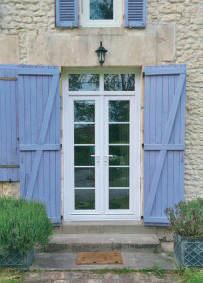
Sean Morrison 06 74 56 89 11 morrisonman8@gmail.com

References Available

06 74 21 47 71 www.facebook.com/willwhiting87




























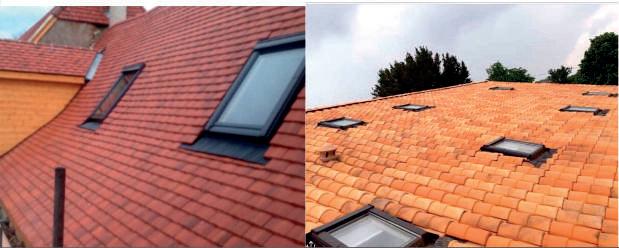





























� Collection from your location in France or Europe

Family run business based in France which prides itself on a personal professional service. 7 tonne truck to and from the UK and Europe, we also have a box trailer for larger loads. Our highly experienced staff provide a door to door service with packing and dry secure storage We arrange customs clearance for export and import to and from the UK. We are a professional furniture removal company NOT a man and a van. Phil and Jean Evans (+33) 05 55 34 19 46 Mobile (+33) 06 80 75 87 14




No need to head to your local distribution point, join our evergrowing list of subscribers and we’ll arrange for etcetera magazine to be delivered to your door every month. That’s 12 editions a year!

Annual subscription France 55€ / UK 55€ www.etceteraonline.org













